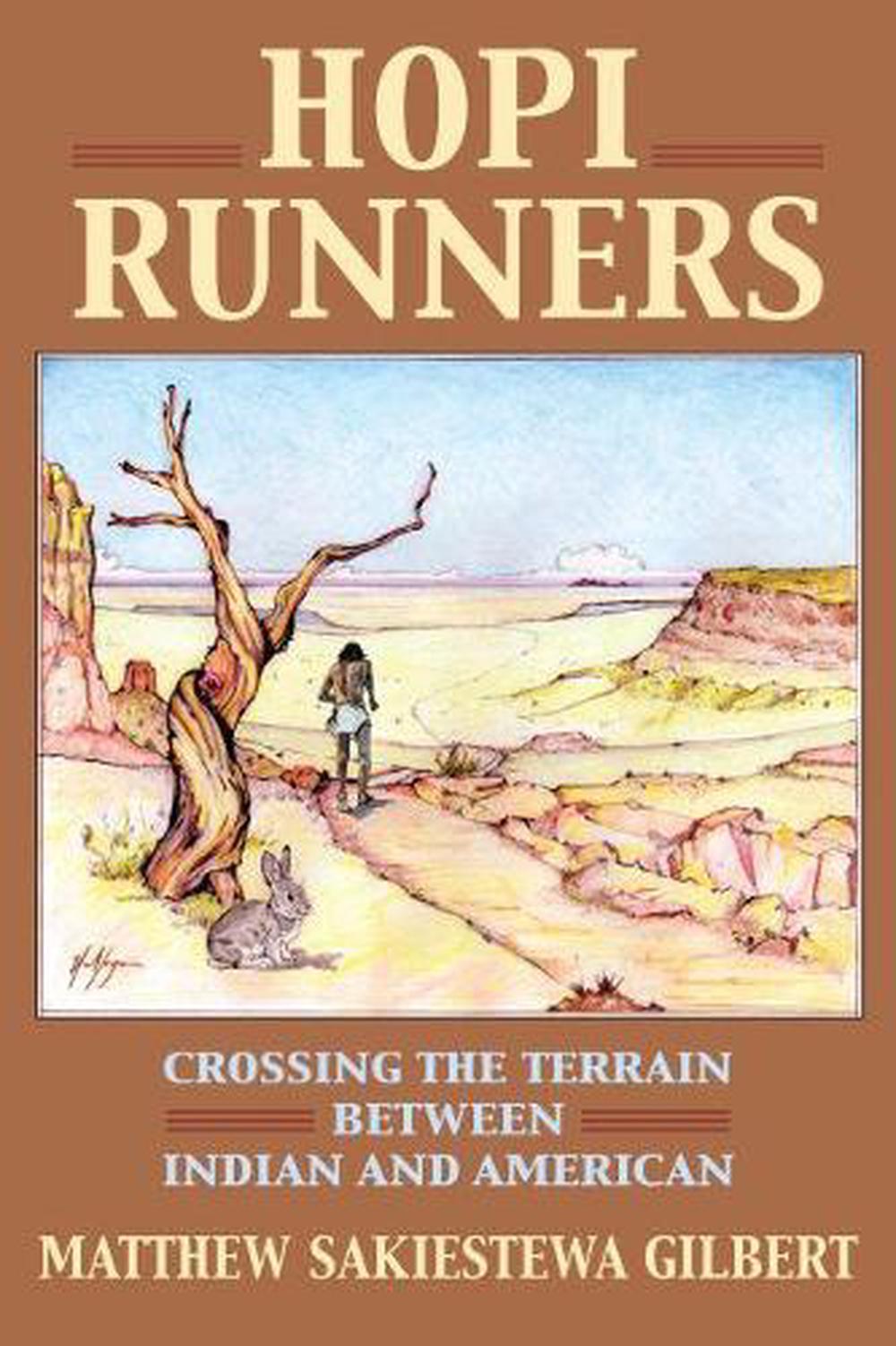
Hopi Runners
by Matthew Sakiestewa Gilbert
Long before Hopis won trophy cups or received acclaim in American newspapers, Hopi clan runners competed against each other on and below their mesas–and when they won footraces, they received rain. Hopi Runners provides a window into this venerable tradition at a time of great consequence for Hopi culture.
Hardcover
English
Brand New
Publisher Description
In the summer of 1912 Hopi runner Louis Tewanima won silver in the 10,000-meter race at the Stockholm Olympics. In that same year Tewanima and another champion Hopi runner, Philip Zeyouma, were soundly defeated by two Hopi elders in a race hosted by members of the tribe. Long before Hopis won trophy cups or received acclaim in American newspapers, Hopi clan runners competed against each other on and below their mesas—and when they won footraces, they received rain. Hopi Runners provides a window into this venerable tradition at a time of great consequence for Hopi culture. The book places Hopi long-distance runners within the larger context of American sport and identity from the early 1880s to the 1930s, a time when Hopis competed simultaneously for their tribal communities, Indian schools, city athletic clubs, the nation, and themselves.
Author Matthew Sakiestewa Gilbert brings a Hopi perspective to this history. His book calls attention to Hopi philosophies of running that connected the runners to their villages; at the same time it explores the internal and external forces that strengthened and strained these cultural ties when Hopis competed in US marathons. Between 1908 and 1936 Hopi marathon runners such as Tewanima, Zeyouma, Franklin Suhu, and Harry Chaca navigated among tribal dynamics, school loyalties, and a country that closely associated sport with US nationalism. The cultural identity of these runners, Sakiestewa Gilbert contends, challenged white American perceptions of modernity, and did so in a way that had national and international dimensions. This broad perspective linked Hopi runners to athletes from around the world—including runners from Japan, Ireland, and Mexico—and thus, Hopi Runners suggests, caused non-Natives to reevaluate their understandings of sport, nationhood, and the cultures of American Indian people.
Author Biography
Matthew Sakiestewa Gilbert is associate professor of history and American Indian studies at the University of Illinois at Urbana-Champaign. He is the author of Education beyond the Mesas: Hopi Students at Sherman Institute, 1902–1929.
Table of Contents
List of Illustrations Preface Acknowledgments Introduction: To the Fence and Back 1. A World Unlike Their Own 2. Dirt Trails and Steel Rails 3. Hopi Olympian 4. A Tribe of Racers 5. Land of Oranges 6. Footraces across America Conclusion: Crossing the Terrain Epilogue: Still Running Appendix A: Louis Tewanima, Hopi (1882-1969) Appendix B: "Are Moqui Runners World Beaters?" Appendix C: Carlisle Town Council Resolutions Appendix D: A Hopi Runner and His Marathon Trophy Notes Bibliography Index
Review
Hopi Runners is much more than an exquisite history of sport; it is a masterful interpretation of culture, identity, and power in motion. It elevates our appreciation for athletes and athletic traditions often forgotten while deepening our understanding of the social worlds that created and celebrated them. The book shines as an example of the power of thinking of indigenous achievements, interpretations, and actors in context. Indeed, one of the greatest strengths and pleasures of this book lies in its counter-readings that both draw on dominant accounts and unsettle them, unpacking preoccupations and biases, highlighting silences, and rerouting indigenous peoples and perspectives."" - C. Richard King, author of Redskins: Insult and Brand
Review Quote
"Sakiestewa Gilbert tells an important Hopi story in its own right, but also proves that the story reveals contours of American national identity and society related to sport and race. Hopi Runners is essential reading for those interested in Western running and sport more broadly, as it will help readers contextualize mainstream athletic competition in larger and intersecting histories of Indigenous sporting cultures."-- Journal of Sport History "A fine example of interdisciplinary scholarship, this study demonstrates how sports--broadly conceived--can provide a window on history. Moreover, it reveals how Native people charted a course through difficult times and in circumstances beyond their control."-- Choice
New Feature
List of Illustrations Preface Acknowledgments Introduction: To the Fence and Back 1. A World Unlike Their Own 2. Dirt Trails and Steel Rails 3. Hopi Olympian 4. A Tribe of Racers 5. Land of Oranges 6. Footraces across America Conclusion: Crossing the Terrain Epilogue: Still Running Appendix A: Louis Tewanima, Hopi (1882-1969) Appendix B: "Are Moqui Runners World Beaters?" Appendix C: Carlisle Town Council Resolutions Appendix D: A Hopi Runner and His Marathon Trophy Notes Bibliography Index
Details

